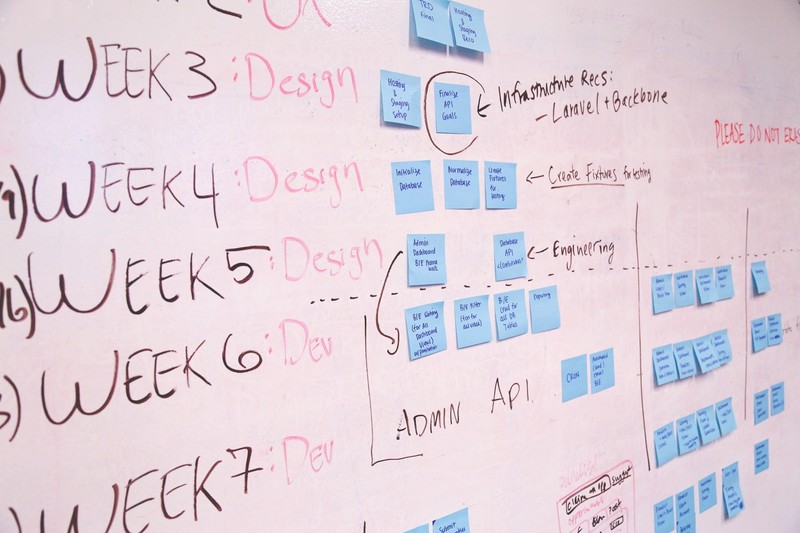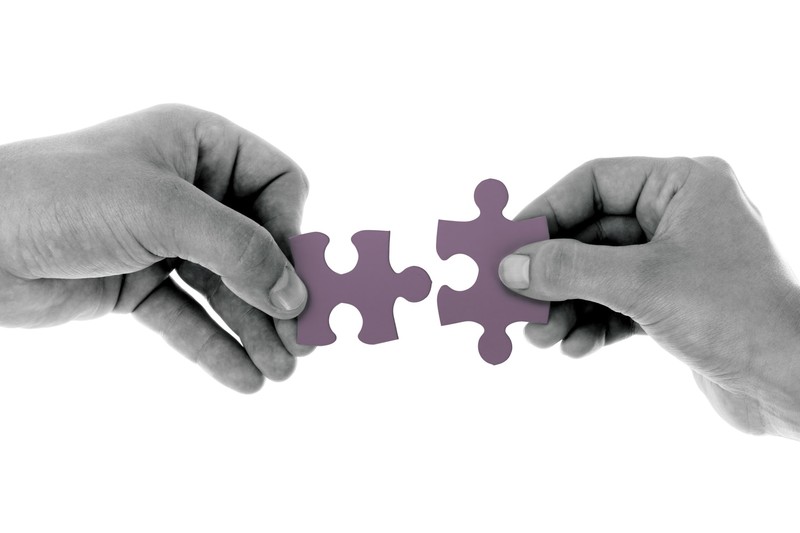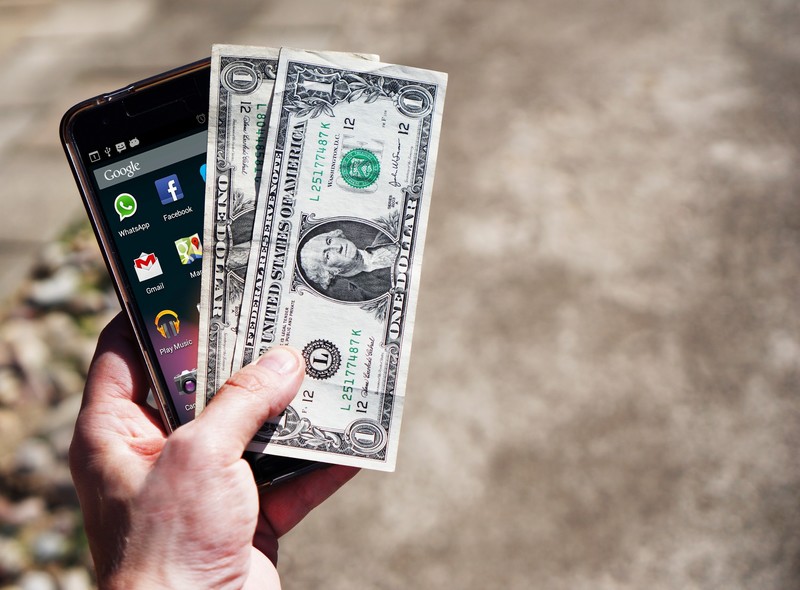Since its launch in 2012, Tinder’s success has made a lot of wanna-be entrepreneurs relentless in their quest to launch an even more successful dating application. Of course, this is no surprise – who wouldn’t want to have 50 million active users that spend an hour and a half on the app (on average) daily?
Before Tinder, dating someone you’ve met online seemed weird and crazy. These days, looking for your one true love with a dating application is completely socially acceptable. As the demand for dating apps grows, the market seems to be flooded with enough dating apps of all types, yet, most of them are nothing more than Tinder clones, lacking any unique selling points and innovative features.
We have designed six guidelines to help you make sure your dating app won’t sink into oblivion. Let’s get started!

5 Statistics That You Need To Know Before Starting
#1. Over 11 million U.S. adults use mobile dating apps at least once a month. That is more than twice as much as the amount of U.S. adults that use online dating on their PCs at the same frequency. In addition, the number of single adults in the USA continues to rise (from 31.4 million people in 2010 to 35.39 million in 2016).
The takeaway: there is enough demand in the market for your supply (i.e. for your dating app). All you need is a specific target group and a good strategy.
#2. 84% of dating app users are searching for a stable romantic relationship. A further 43% are using online dating services to make friendly contact. Only 24% of dating app users stated that they were seeking sexual encounters, exclusively. According to eHarmony, 20% of committed romantic relationships began online.
The takeaway: you can either focus on satisfying the needs of those who seek ‘no strings attached’ encounters, or develop your application to help those 84% find a stable romantic relationship.
#3. It has also been revealed that there are more male internet users than femal users, when it comes to dating app usage.
The takeaway: make sure you have a balanced ratio of female and male users. You can attract female users with design, specific app features or through targeted marketing campaigns.
#4. Dating sites and apps are the most engaging for the younger generation of internet users. 30% of U.S. adults active on the Internet aged between 18 and 29 years old are currently using online dating services.
The takeaway: your app must be up-to-date with all the trends that your target group endorses. Those trends depend heavily on the age of your target group. While it makes perfect sense to focus on younger target groups, you can also choose to focus on other demographic groups, we well. Bear in mind that younger target groups are more demanding in terms of user experience, user interface and features.
#5. According to eHarmony, the user’s city of residence can significantly influence their experience on the application. For example, 50% of New York State residents are single, and New York City is at the top when it comes to number of users on eHarmony. In contrast, there are fewer users in Idaho, where 60% of the population is married.
The takeaway: if your app for dating is to be launched locally, conduct thorough research on local marriage statistics.
How To Create A Dating App

1. Know Your Target Group
Determining the target group(s) of your potential users is, probably, the most important decision that you will make during the whole software development process. Bear in mind that focusing on one or several target groups doesn’t mean excluding anyone who doesn’t fit the criteria. It is about having enough information to design your software specifically for that group (including features and user experience). Besides, this information will be your weapon in creating and delivering a powerful message to your potential users during marketing campaigns.
There are two key categories of parameters to consider: demographics and psychometrics.
Demographics of your target group(s) are all about figures and facts, and can include such factors as:
-
age;
-
gender;
-
location;
-
income level;
-
Occupation; and,
-
ethnic background etc.
Psychometrics is a bit trickier. This is about certain traits of the typical future users of your application. You need to create a detailed portrait of those people. The basic questions in your questionnaire should include, but are not limited to:
-
What are the users like, as people?
-
What personality traits do they have in common?
-
What is their typical day/week like?
-
What are their core values?
-
What are they interested in? What are their hobbies?
-
What are their attitudes towards online dating?
-
What problems do they encounter when it comes to dating?
All of this will help you wisely determine your project scope and promotion strategy. After all the information is gathered, there is one more question to answer. How and why will your application fit into their daily lives?
2. Study Your Competitors
The dating app market is flooded with apps, from low-quality ones to top trends. You can learn from studying both categories.
-
Study the key features of top trending dating apps. What are their key selling points?
-
Take a close look at user reviews for the most and the least popular dating apps. What are their users satisfied with? What can’t they stand about those apps? The information that you gather will allow you to escape the key drawbacks of your competitors while enhancing your product with their advantages.
-
Pay attention to both local competitors and global ones. Apps from both categories are your competitors, regardless of the scale. How did the global ones manage to become so popular? Why do people love them?
3. Create a Matching Algorithm
How are you going to match your users?
It isn’t about mathematics. Even OkCupid acknowledged that it doesn’t know what it’s doing – there is no science behind their matchmaking algorithm.
Here’s one insight. According to eHarmony data, common interests and looks are the most important factors for users when they are looking for a match. 64% of online dating service users stated that they are looking for a person that they have something in common with. 49% of respondents acknowledged that they are looking for a person with looks that they are attracted to.
If you want to use this insight in your software, make a simple yet insightful questionnaire for users to collect the necessary data.
Make your matching process the unique selling point of your product. There are already dating apps that match people based on their location (Tinder), preferred restaurants or bars (Dine), whether you have common friends (Hinge), etc. Regardless of whether you opt for plain filters or intricate algorithms, make it unique – don’t focus on making a ‘Tinder alternative.’
4. Satisfy Users’ Basic Needs
Besides the specific needs of your target group, there are two needs that are common to most dating app users: security and intuitive user experience.
Security. There can be creepy dates, and there can be dangerous ones. Your users want to feel safe using your software. That includes not only security measures for protecting personal data, but also security checks of the users themselves. For example, Her, a dating app for lesbians, has a security check via Facebook to make sure that the users are female. Besides this step, the application also collects data from other social network accounts created with the same email address, such as Twitter or LinkedIn.
Here are some security measures that you can introduce:
-
‘Verify profile’ option: encourage your users to provide their phone number or links to accounts on social media. The less anonymous the person is, the less likely he/she is to be a threat to others.
-
Filtering messages: you can do this manually or automatically to make sure the users won’t threaten anyone or use hate speech in their messages.
-
Banning option: empower your users to complain about indecent behavior from fellow users.
-
Blacklist option: allow users to get rid of encounters that are unwanted for them.
If you want to introduce such security checks by collecting more personal data, build your app bearing in mind the need to protect that data.
Intuitive user experience. Intuitive user interfaces are interfaces that the user understands how to navigate at a glance. This is what makes the app’s user experience pleasant and addictive. To achieve this, empower users to complete tasks faster and be clear:
-
Make the user workflow as simple as possible.
-
Reduce the number of movements that they need to complete the action. Also, minimize the number of screens the user needs to go through and the number of fields they need to fill.
-
Optimize the amount of text on the screen.
-
Make sure your calls to action are clear.
It may be very tempting to include every feature that you have in mind, but if it comes at the cost of UX simplicity, you need to prioritize.
5. Think Through The Scope Of The Features
We’ve already tackled the security measures, UX/UI and matching algorithms. There are two more features to consider.
Discovering people. Besides the core matchmaking algorithm, you can give your users some advanced filters. Make them in charge of the whole process of meeting new people. You can include filters by location, preferences, age, etc.
Messaging. People use dating apps to communicate, obviously. Yet, sometimes, looking for more matches can be addictive and many people jump into getting-to-know-each-other.
Encourage your users to start a conversation as soon as they see a good match. You can do this with a pop-up or push message, though this is not guaranteed to work. So, try to design some rules for messaging. For example, if you find a match on JSwipe, you have a limited amount of time to start chatting. Bumble also introduced a rule for messaging: women need to start the conversation.
When it comes to the built-in messenger, design it to be simple yet handy. The satisfaction of using a dating application depends heavily on the chat experience. Here are some things to keep in mind:
-
Make it easy to see information on the person your users are chatting with. You can also add some statistics about the conversation itself, e.g. how many words have been exchanged, etc.
-
Introduce innovative features that can transform the whole experience of texting. Those could be built-in suggestions on how to start a conversation or custom stickers and GIFs.
6. Monetize The App
The monthly revenue of Match.com amounts to $2.59 million. How can you make money out of dating online?
The harsh truth is that it is quite difficult and challenging to monetize an app for dating. People don’t take dating online seriously enough to invest money into it. Let’s take a look at the ways you can monetize your app.
In-app purchases. Offer users options to buy specific in-app items, such as emojis, likes, etc. For instance, the happn application encourages users to buy “charms.” The payoff is simple: when a user “charms” someone, they instantly get notified about it.
In-app ads. Be careful with this type of monetizing. In-app advertising is known to be quite irritating, especially if the ads are popping up during use. If you want to include ads in your application, consider built-in banners.
Premium access. This is one of the most popular methods of monetization among dating apps. In a nutshell, a premium account allows your users to use additional features.
If you want users to bring you profits, encourage them to invest instead of paying. What’s the difference? When you invest, you expect your investments to pay off. With dating apps, paying off means improving the experience and making it easier to find a perfect match. Besides, when you are deciding whether to invest, you compare the value to the price. The price of the app’s additional features must correspond with their value to the users.
Don’t fall into one common trap. Don’t make the free version of the app intentionally worse thinking it will encourage users to buy premium features. It won’t. It will encourage them to stop using your app at all.
Tip. Make premium access flexible: create several subscription plans. The more the user pays, the more advanced features they get.
Partnerships with local businesses. Make a deal with local dating-related businesses to advertise them within the application. For example, you can break a deal with restaurants, bars, hotels, flower shops, etc. to promote them. This type of monetization will work the best when you already have a significant number of local users.

How Much Does It Cost To Create An App Like Tinder?
The cost of developing a dating app varies depending on the features you want to include. It also depends on the number of platforms you want to cover:
-
Mobile phones: you can develop your app to run solely on Android or iOS, or you can consider developing a cross-platform app. The latter will cost more, as it will take more time and effort to create.
-
Tablets: if you consider this platform necessary, you need to make sure the app is compatible with tablets.
-
Web app: you need to make a decision as to whether you need to run your online dating service on a website, as well.
Your decision in this regard should be based on your target group’s preferences. What device and OS are they more likely to use?
Before we dive into specifics, brace yourself for a heavy budget. An app like Badoo or Tinder requires complex architecture, thus requiring a thorough and long development process.
The basic components of the pricing structure are:
-
app development for one platform (550+ hours)
-
backend (200+ hours)
-
UI/UX design (around 100 hours)
-
project management and quality assurance (up to 100 hours)
Let’s take a closer look at app development. The iOS version of Tinder includes the following components:
-
Onboarding (sign up and tutorial): estimated 35+ hours
-
My Profile page (viewing, editing, verifying the profile, popularity history, in-app purchases management): estimated 290+ hours
-
Messenger: estimated 80+ hours
-
Discover People feature: estimated 50+ hours
-
Matching (viewing other users’ profiles, liking/disliking users): estimated 40+ hours
-
Settings: estimated 60 hours
So, let’s say it takes 950+ hours to develop a Tinder-like app for one mobile platform. Depending on the qualification of the specialists on your development team, the hourly rate can vary between $15 and $51 for a software developer, $16 and $54 for a software engineer and between $44 and $104 for a senior software engineer.
Given the numbers, if the average hourly rate is around $25-30, the cost of development for the simplest matchmaking app can vary between $23,750 and $28,500. This is based on developing an app for only one platform. If you want to launch the app on both Android and iOS, it will cost you between $37,500 and $45,000.
Bottom Line
Matchmaking app development is a complex process that requires a lot of intellectual and financial resources. You need to take many things into consideration: from determining the target group and studying your competitors to designing matching algorithms, security and chatting features. And, yes, it is a costly process if you want your app to be of high quality. With monetization and promotion strategies chosen wisely, those investments will pay off, as proven by Tinder, Badoo and many others. Do not hesitate to reach out to get a free quote from our team and get answers to any of your questions.









